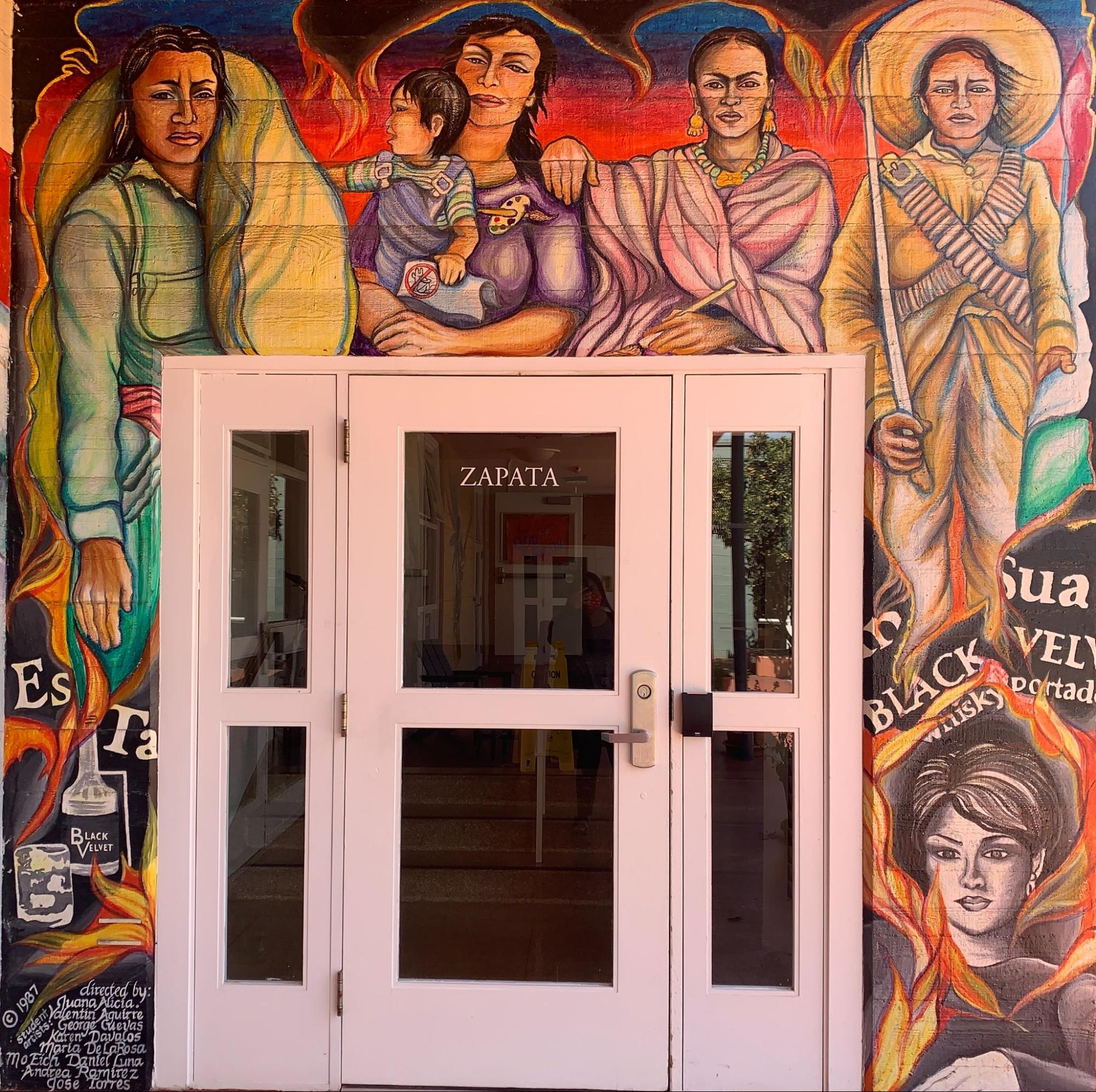During her time as the Casa Zapata Resident Fellow, Gina Hernandez-Clarke became interested in the 30-year history behind the countless murals in the dorm and elsewhere on campus. Aside from adding to the “diverse and vibrant community” on campus, murals are also an “artistic gesture of protest,” Hernandez-Clarke said.
Hernandez-Clarke spoke about the murals at a lecture that was part of the Center for Comparative Studies in Race and Ethnicity’s (CCSRE) 17th Annual Anne and Loren Kieve Distinguished lecture events, which is sponsored by the CSRE and the Institute for Diversity in the Arts. By guiding the audience through a couple of murals on campus, Hernandez-Clarke shared her knowledge of the art’s history.
“The Spirit of Hoover” is a mural located on the first floor of Casa Zapata. As explained by Hernandez-Clarke, the student-driven mural was supported by Jose Antonio Burciaga, the Casa Zapata Resident Fellow at the time, and created to spark a conversation around “the student lack of engagement on issues on campus and beyond.”

Different parts of the piece touch on various political issues of the time. The left panel of the mural alludes to efforts by student activists to get Stanford to divest from apartheid. The panel shows aggressive armed police officers with weapons and South African people protesting and pulling on the ropes attached to Hoover Tower. Hernandez-Clarke explained that the ropes pulling on Hoover Tower are meant to represent student movements. At the bottom of the panel, a piggy bank with the Stanford logo is shown receiving coins from the interaction between the officer and protester.

Hernandez-Clarke explained that the evocative skeleton in the middle of the mural is meant to serve as a symbol to encourage students to see themselves in the social movements happening on campus. The overall objective of the mural, according to Hernandez-Clarke, was to spark conversations beyond the dorm about the issues the students were concerned about.

In the right panel, the Statue of Liberty, with her torch dropped on the ground, holds an unbalanced scale with a woman and a child weighing less than an illustration of food products. According to Hernandez-Clarke, this alludes to the United States’ political interventions that allowed companies like the United Fruit Company to exploit Latin American countries.
One of the many meaningful aspects behind these murals was students’ involvement in the concept, painting and unveiling of the murals, according to Hernandez-Clarke. She recalled from her own participation in the “The Spirit of Hoover” mural unveiling at the steps of Hoover Tower that murals have the “power to share history” because they “express ideas vividly and allow students to speak up.” She added that murals are an “important treasure of excellence on campus” and described them as “sites of public memory.”
